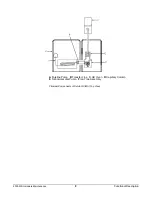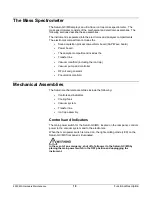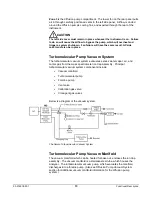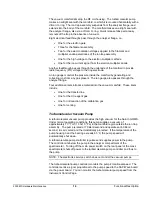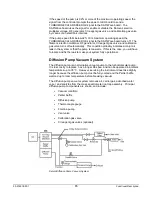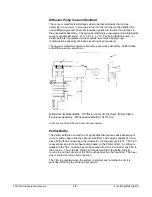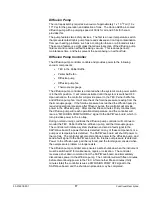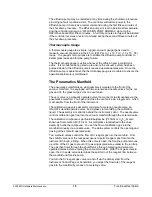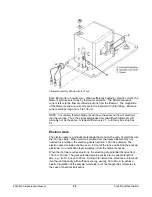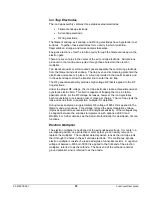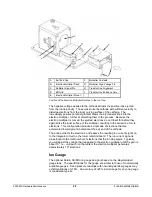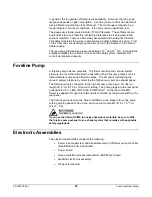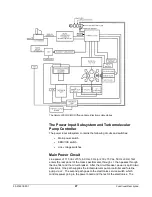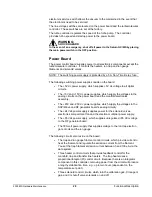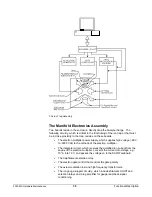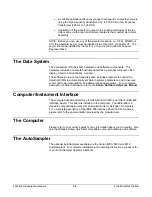
03-914978-00:1
19
Functional Description
The Transfer Line
A stainless-steel-tube transfer line directly couples the GC to the mass
spectrometer. The transfer line keeps the GC column warm as the column
enters the mass spectrometer. The transfer line is 12 cm (5 in.) long, and has a
diameter of 4.1 cm (1.6 in.). One end enters a hole in the right side of the GC
before passing into the GC oven. The other end enters the vacuum manifold
with the transfer-line tip inserted into the ion trap.
The body of the transfer line consists of a stainless-steel weldment fitted with a
center tube, a heat exchanger, and a boot. The heat exchanger is an aluminum
cylinder that contains a cartridge heater and a thermocouple as the temperature
sensor. The temperature sensor measures the temperature of the tube. The
cartridge heater heats the cylinder, which in turn distributes heat evenly
throughout the length of the transfer line tube. The boot of the transfer line,
which mates to the GC, prevents hot air leakage from the GC Oven.
Transfer Line
A
Spring
B
Boot
C
Tie Wrap
D
Washer
E
Transfer Line Tip
F
O-Ring
G
Heat Exchanger
H
Nose
I
E-Ring
J
Ferrule
K
Nut
A bayonet mount feature secures the transfer line. Before you remove the trap,
push gently on the bayonet mount as you twist it counterclockwise and pull the
mount out. Make sure the transfer line extends out from the trap.
NOTE: Failing to remove the transfer line before removing the trap may damage
the trap heater post.
The power board supplies power to the cartridge heater via a transfer line heater
cable. The heater cable projects out from one end of the transfer line. It then
plugs into a soft-shell connector on the top of the power board panel.
You set the transfer line temperature from the Instrument Control Page. The
maximum temperature that the transfer line can sustain is 350
°
C; the minimum
temperature depends on the GC oven and trap temperatures. In general, you can
set the transfer line temperature as much as 30
°
C below the maximum column
operating temperature and not observe adverse chromatographic effects (e.g.,
retention time shifts or peak broadening).




